Key takeaways
- Prioritizing usability in interface interaction design enhances user satisfaction and efficiency.
- User personas, developed through qualitative and quantitative research, guide design decisions and foster empathy toward users.
- Regular updates and cross-team collaboration are essential for maintaining relevant and effective personas.
- Detailed personas improve design outcomes by streamlining decision-making and enhancing user engagement.
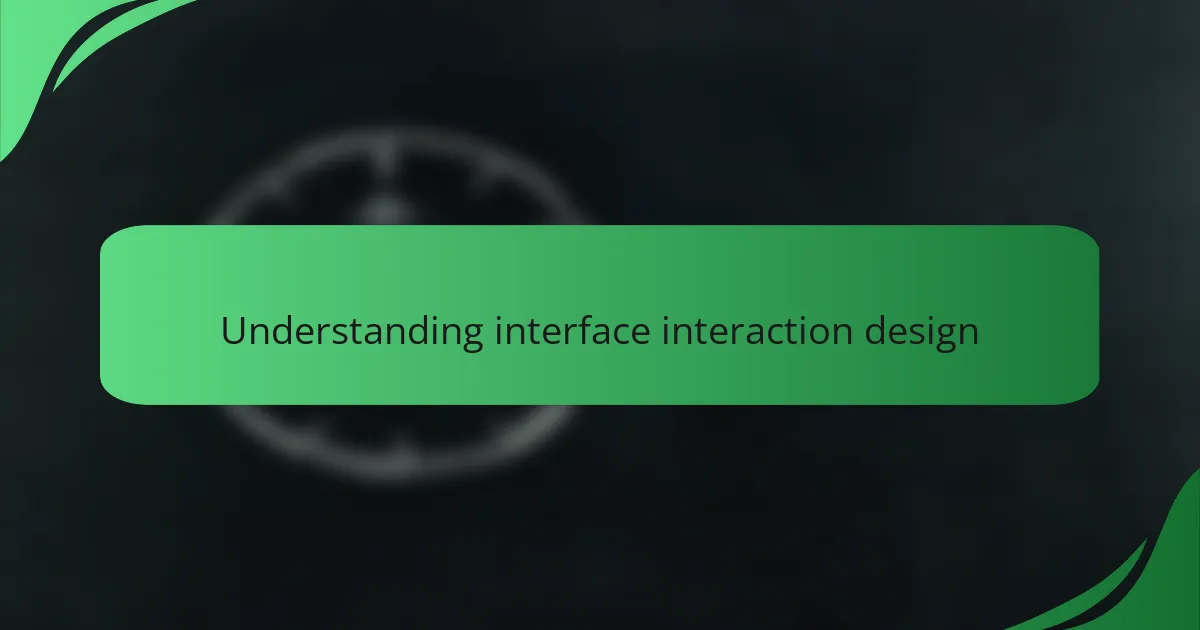
Understanding interface interaction design
Understanding interface interaction design is crucial for creating user-friendly experiences. It’s about how users engage with digital interfaces, encompassing everything from buttons to navigation menus. In my experience, I’ve seen that when designers prioritize usability, it leads to greater satisfaction and efficiency for users.
A key aspect of this design field is the balance between aesthetics and functionality. I recall a project where we emphasized sleek visuals, but soon realized that usability suffered. Adjusting our approach to align more with user needs made a noticeable difference in user engagement.
Here’s a comparison table that outlines some fundamental aspects of interface interaction design:
| Aspect | Importance |
|---|---|
| Usability | Ensures users can complete tasks effectively. |
| Aesthetics | Enhanced appeal can attract users but shouldn’t compromise functionality. |
| Feedback | Real-time responses are vital for user trust and satisfaction. |
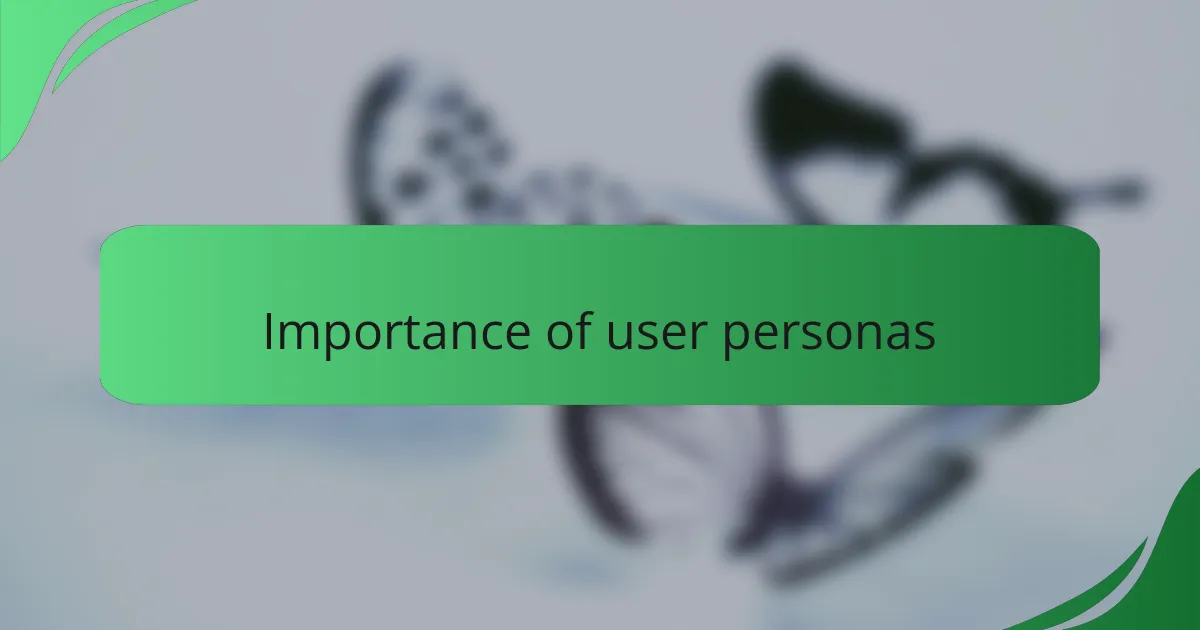
Importance of user personas
Understanding the importance of user personas in UX design cannot be overstated. In my own journey, creating user personas often felt like unlocking a treasure chest of insights about my audience. When I took the time to delve into their motivations, frustrations, and goals, it transformed how I approached design. I realized that each persona represented a real person with distinct needs, which made my designs more empathetic and user-centered.
User personas serve not just as fictional characters but as valuable tools that guide decision-making. They help in prioritizing features and inform design strategies based on real user data. From my experience, here are some critical points about why they matter:
- Enhanced understanding: They clarify who your users are, making it easier to align design efforts with their needs.
- Improved focus: Personas help maintain a user-centered approach throughout the design process, ensuring that decisions resonate with actual user behavior.
- Better communication: They serve as a common language among team members, fostering collaboration and reducing misunderstandings about the target audience.
- Increased engagement: Crafting features that resonate with user personas often leads to improved engagement and customer satisfaction.
By grounding my design decisions in detailed personas, I found that my projects not only delivered results but also made a meaningful impact on my users.
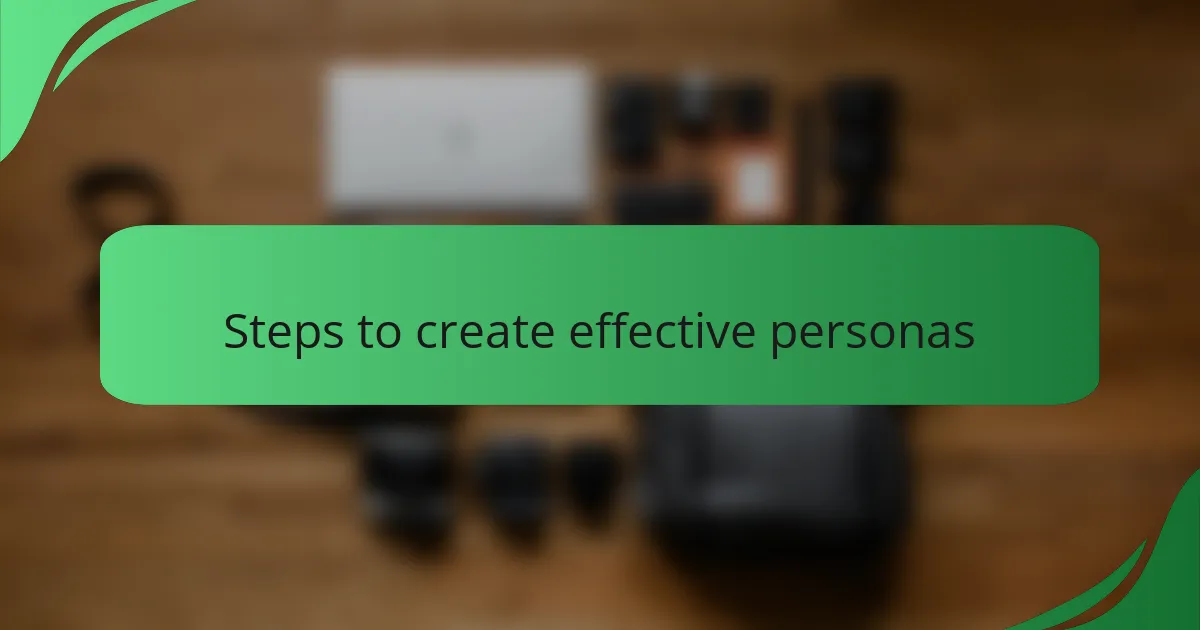
Steps to create effective personas
Creating effective personas is a crucial step in understanding your users. In my experience, the best personas are built from a mix of qualitative and quantitative research, which gives them depth. I vividly remember a project where we conducted interviews with real users; the stories they shared were not just data points, they were deeply personal. This emotional connection helped us shape our personas in a way that resonated with the entire design team.
To ensure that the personas are truly effective, here are some important steps to follow:
- Conduct User Research: Gather data through interviews, surveys, or focus groups to understand user needs and behaviors.
- Identify Patterns: Analyze the data to find common themes and characteristics among your users.
- Create Detailed Profiles: Develop findings into detailed profiles that include demographics, motivations, frustrations, and goals.
- Use Real Quotes: Incorporate direct quotes from users to enhance authenticity and empathy.
- Update Regularly: Keep the personas relevant by revisiting and updating them based on new research and insights.
By following these steps, I’ve found that teams are better equipped to create interfaces that truly resonate with users.

My approach to building personas
Building personas is a process that I approach with both intuition and method. I start by immersing myself in user research, often recalling the moments when I listened to users share their stories. Those conversations felt like peering into a world filled with unique challenges and triumphs, and it struck me how important it is to genuinely connect with people to flesh out these personas. Have you ever felt that rush of excitement when you realize you’ve captured something truly essential about the user experience?
Next, I focus on creating narratives around these personas. I’ll craft profiles that breathe life into the data—after all, each persona is a representation of real users with hopes, frustrations, and goals. I find that using direct quotes from users adds an emotional depth, transforming cold statistics into relatable characters. I remember working on a project where one of our personas was a busy mom trying to juggle work and family life. Understanding her struggles made our design process feel more meaningful; it was never just about aesthetics but about making her daily life a bit easier.
Finally, I keep in mind that personas are not set in stone. They evolve as we learn more about our users. I often reevaluate them based on new insights, ensuring they remain relevant and true to the users they represent. In my experience, this adaptability is key to creating successful designs that resonate deeply with users. Have you found that keeping your personas updated leads to better design decisions? I know from my own projects that it truly makes a difference.
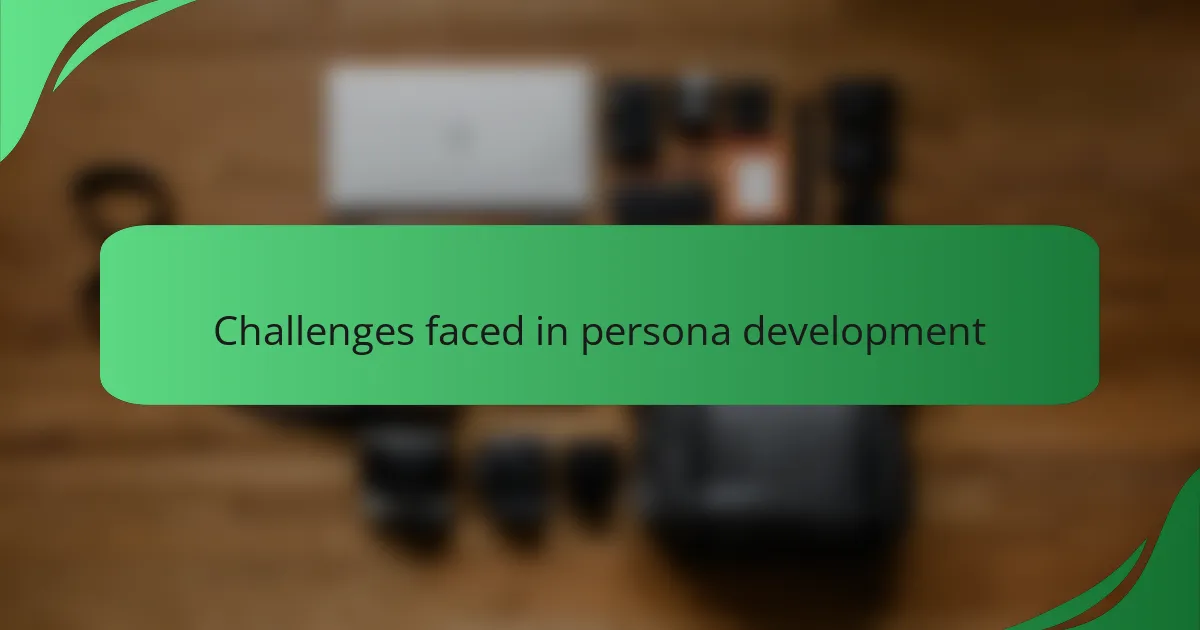
Challenges faced in persona development
Creating personas is not without its challenges. One significant hurdle I’ve encountered is gathering authentic data. Often, users provide vague feedback that doesn’t capture their true motivations or frustrations. I remember a project where we thought we gathered enough information, but once we started crafting personas, we realized we were missing the emotional nuances that make each user unique. How do you get beyond surface-level insights? I find that engaging users in deeper conversations often reveals more meaningful patterns.
Another challenge I’ve faced is ensuring the personas remain relevant over time. As user needs evolve, it’s essential to update these profiles accordingly. I once had a persona that initially resonated well with our design decisions, but after six months, we noticed that their behaviors had shifted. This experience taught me the importance of regular check-ins and updates. Have you felt the pressure of keeping your personas current? I certainly have, and it’s a constant reminder that user research is an ongoing process.
Lastly, there’s the challenge of team alignment. Different team members often have varying interpretations of what personas mean. During one project, I noticed that our designers and developers had conflicting views on a particular persona’s needs. This disconnect led to design choices that didn’t truly reflect our user. How do you bridge such gaps? In my experience, facilitating workshops to collectively brainstorm and discuss personas has been a game-changer, ensuring everyone is on the same page and that our designs truly reflect our users’ realities.

Lessons learned from persona creation
Creating personas has taught me invaluable lessons that have significantly shaped my approach to UX design. One of the most profound insights I’ve gained is the importance of empathy. I remember working on a project where we developed a persona based on a single data point rather than a holistic view. The result was a disconnect from the user’s actual needs. It became clear that nothing can replace deep emotional understanding—listening to user stories has transformed my design process.
Additionally, I’ve learned that personas are not just static documents; they are living representations of our audience. During a later project, we revisited our personas and realized they no longer aligned with our users’ evolving preferences. This epiphany highlighted the necessity of regular updates. Have you experienced this too? Keeping personas fresh and relevant not only leads to better design but also strengthens the connection between the product and its users, which I find incredibly gratifying.
Lastly, cross-team collaboration around personas can sometime feel challenging. I’ve witnessed how different perspectives can lead to confusion or misalignment. Engaging the entire team in persona development has proven to be effective. By organizing brainstorming sessions, everyone gets to voice their insights, which cultivates a richer, more nuanced understanding of our users. It’s exhilarating to see the collective creativity transform our design decisions. How do you foster this collaborative spirit in your projects? From my experience, it’s crucial for authentic user representation.
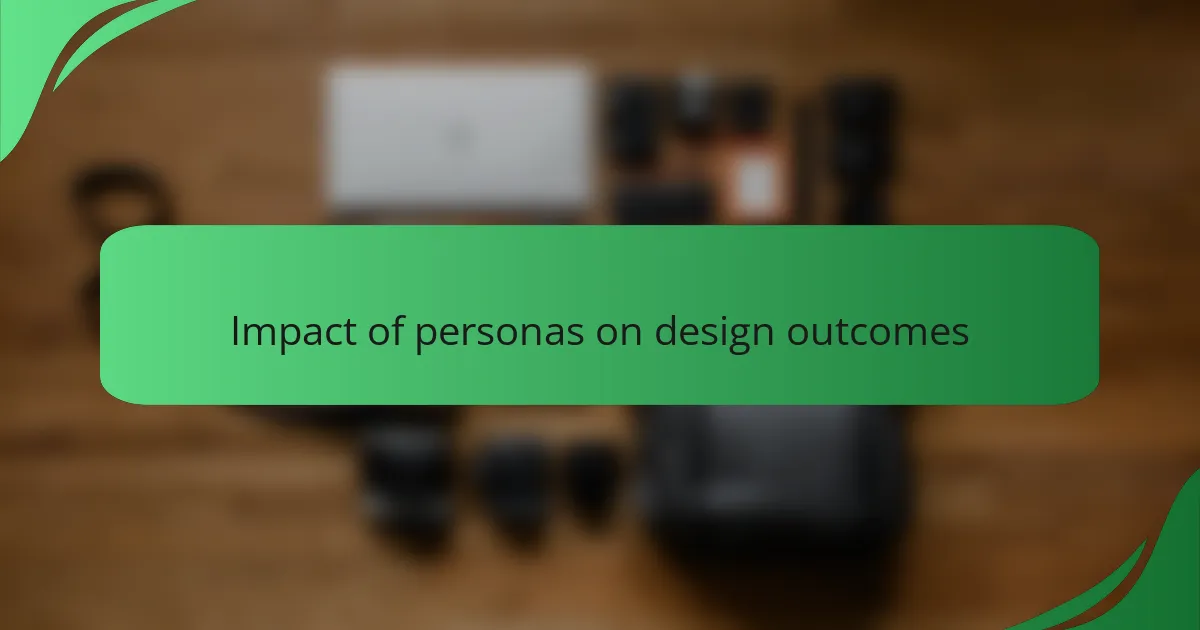
Impact of personas on design outcomes
When I first began incorporating personas into my design process, I quickly realized their transformative impact on outcomes. Crafting detailed personas helped me visualize the users’ needs, aspirations, and pain points. One project, in particular, was a mobile app for seniors. By sticking closely to our personas, we improved accessibility features that resonated deeply with our audience, making me feel a profound sense of accomplishment.
The clarity that personas provide can lead to more focused design decisions. They act as a guide during the design phase, ensuring every element serves a specific user need. Here are some key impacts I’ve experienced:
- Enhances empathy: Personas promote a user-centered approach, allowing designers to connect with users on a deeper level.
- Streamlines decision-making: Clear personas help prioritize features that matter most to the target audience.
- Fosters collaboration: Sharing personas among team members encourages unified efforts and a common understanding of user goals.
- Increases user satisfaction: When designs are tailored to real user needs, feedback is often overwhelmingly positive.
By integrating this approach, I have seen my designs resonate more strongly, leading to better usability and greater engagement.




